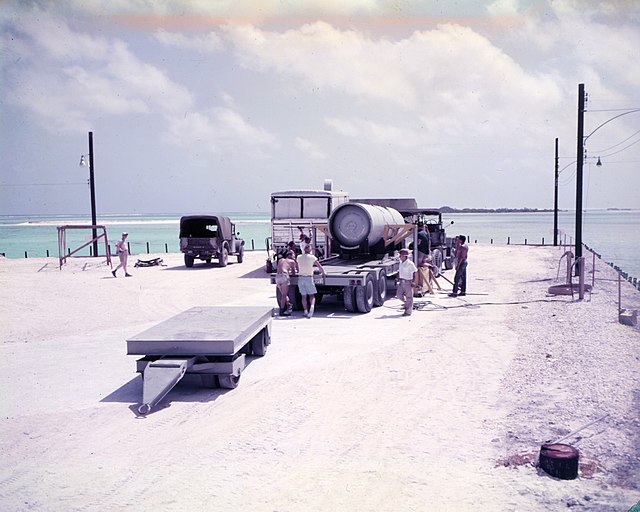Project 4.1 was the designation for a medical study and experimentation conducted by the United States of those residents of the Marshall Islands exposed to radioactive fallout from the March 1, 1954 Castle Bravo nuclear test at Bikini Atoll, which had an unexpectedly large yield. Government and mainstream historical sources point to the study being organized on March 6 or March 7, 1954, less than a week after the Bravo shot.
The Castle Bravo fallout plume spread dangerous levels of radiation over an area over 100 miles long, including inhabited islands.
Castle Bravo was the first in a series of high-yield thermonuclear weapon design tests conducted by the United States at Bikini Atoll, Marshall Islands, as part of Operation Castle. Detonated on March 1, 1954, the device remains the most powerful nuclear device ever detonated by the United States and the first lithium deuteride-fueled thermonuclear weapon tested using the Teller-Ulam design. Castle Bravo's yield was 15 megatons of TNT [Mt] (63 PJ), 2.5 times the predicted 6 Mt (25 PJ), due to unforeseen additional reactions involving lithium-7, which led to radioactive contamination in the surrounding area.
The SHRIMP device in its shot cab
Shot-cab installation of SHRIMP device, with humans for scale
Bravo SHRIMP device shot-cab
SHRIMP device delivered via truck awaiting installation





